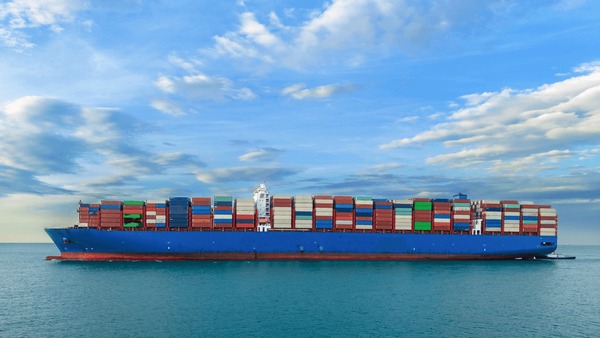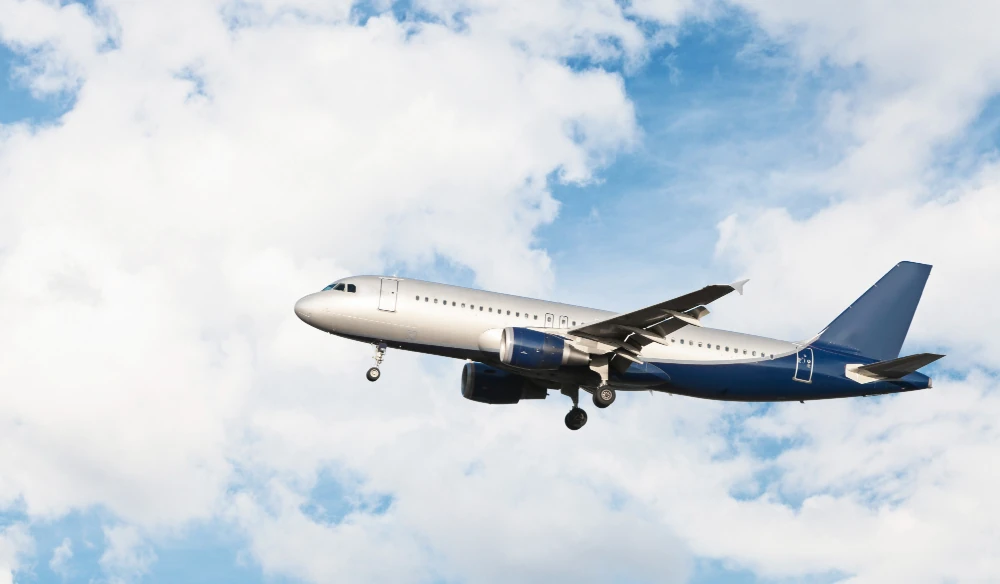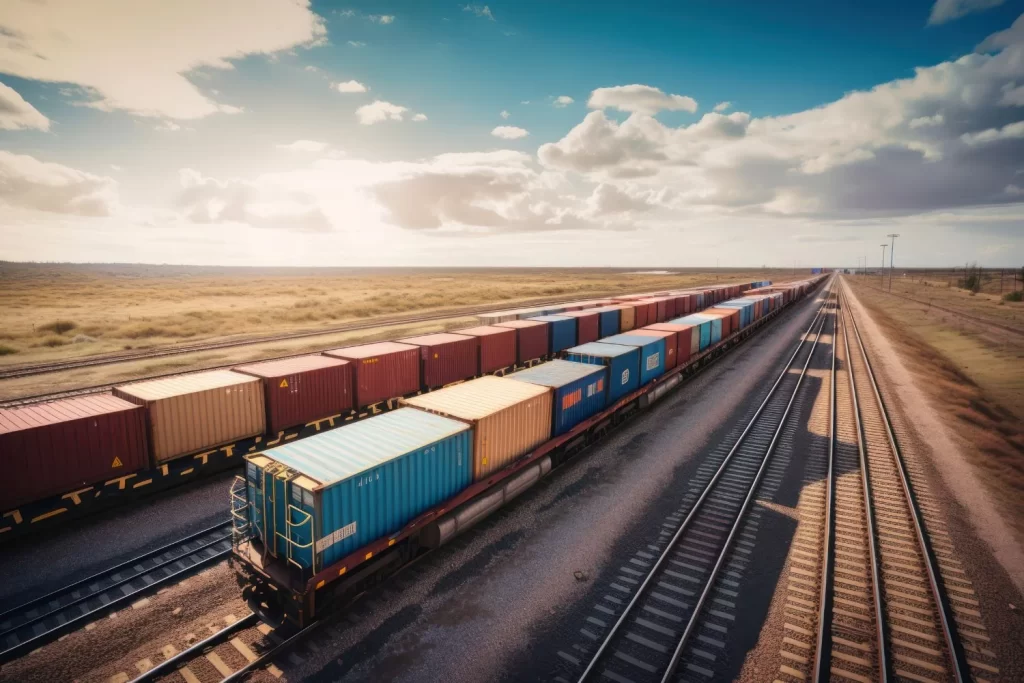- By TOP CHINA FREIGHT
- September 29, 2025
- Shipping
Table of Contents
Managing supply chains effectively requires knowing how China container freight rates work. For many importers and exporters, freight charges make up one of the largest costs in global trade. Yet, rates fluctuate frequently due to seasonal peaks, fuel prices, and container demand. Businesses that fail to track these changes risk budget overruns and shipping delays. This guide breaks down freight rates, explains influencing factors, and shares practical methods to optimize logistics costs.

What do China container freight rates include?
Freight rates are more than just the cost of moving a box across oceans. They bundle multiple charges imposed by carriers, ports, and regulatory bodies. Importers should understand each component to budget accurately.
Main cost elements in container shipping:
1.Ocean freight base charge
standard transport cost per container.
2.Fuel surcharges (BAF/CAF)
adjustments reflecting bunker fuel and currency fluctuations.
3.Port handling fees
covering loading, unloading, and storage.
4.Documentation and customscosts
mandatory paperwork and clearance charges.
5.Insurance and security surcharges
protection for high-value or risky cargo.
Table: Components of China Container Freight Rates
| Cost Component | Description | Importance Level |
|---|---|---|
| Base Ocean Freight | Fixed charge per 20ft or 40ft unit | High |
| BAF / CAF | Fuel & currency adjustments | Medium |
| Terminal Handling | Loading, unloading, storage | Medium |
| Documentation Fees | Customs and compliance paperwork | Low–Medium |
| Insurance & Security | Risk management | Variable |
How much does it cost to ship a container from China?
The cost of container shipping from China depends on destination, container size, and season. Typically, a 20ft container is cheaper but has limited space, while 40ft or 40ft High Cube containers provide better value per cubic meter.
Table: Estimated Container Freight Rates from China (2025)
| Container Size | China–USA (West Coast) | China–USA (East Coast) | China–Europe | China–Australia |
|---|---|---|---|---|
| 20ft | $1,800 – $2,800 | $2,500 – $3,500 | $1,500–$2,400 | $1,600–$2,300 |
| 40ft | $3,200 – $4,500 | $4,200 – $5,800 | $2,600–$4,000 | $2,800–$3,800 |
| 40ft HC | $3,400 – $4,900 | $4,500 – $6,200 | $2,900–$4,300 | $3,000–$4,200 |
These figures shift during peak shipping seasons such as before Chinese New Year and year-end shopping demand.
Why do container freight rates from China change so often?
High seasons increase demand, causing price hikes.
Limited vessel availability pushes rates upward.
Rising oil costs directly impact freight charges.
Recession or trade surges alter global shipping volumes.
Port strikes, conflicts, or sanctions can add surcharges.
What are the shipping methods from China?




Importers can select sea, air, rail, or express freight depending on delivery needs and cargo type. Each method influences overall freight cost and reliability.
Table: Comparison of Transport Methods
| Method | Avg. Cost Level | Transit Time | Benefits | Limitations |
|---|---|---|---|---|
| Sea Freight | Low | 18–40 days | Cost-effective, bulk-friendly | Slow, weather risks |
| Air Freight | High | 3–7 days | Fast and reliable | Expensive, limited by weight |
| Rail Freight | Medium | 14–22 days (to EU) | Balance of speed and cost | Only for Eurasian routes |
| Express Freight | Medium-High | 3–10 days (door-to-door) | Convenient, ideal for small parcels, e-commerce | Costly for larger shipments, size/weight limits |
How long does shipping from China take?
Transit times differ by destination and method. Sea freight is slow but economical, while air freight ensures quick delivery.
Table: Transit Times by Destination (Sea Freight)
| Destination | Avg. Days |
|---|---|
| China – West Coast USA | 18–22 |
| China – East Coast USA | 28–35 |
| China – Europe (Main) | 25–30 |
| China – Middle East | 12–18 |
| China – Southeast Asia | 7–12 |
| China – Australia | 15–20 |
Which documents are needed for shipping containers?

Accurate documentation avoids customs delays and penalties. Freight forwarders usually assist with preparation.
Table: Required Shipping Documents
| Document | Purpose |
|---|---|
| Bill of Lading | Proof of contract between carrier & shipper |
| Packing List | Cargo details for customs |
| Commercial Invoice | Declares cargo value |
| Certificate of Origin | Identifies production location |
| Customs Declaration | Regulatory clearance requirement |
| Insurance Policy | Protects against cargo risks |
What is the difference between FCL and LCL?

FCL (Full Container Load):
Entire container booked by one shipper. Best for large shipments, lower risk of damage, and faster handling.
LCL (Less than Container Load):
Cargo consolidated with other shippers. Cost-efficient for smaller volumes but involves longer processing.
Table: FCL vs. LCL
| Factor | FCL | LCL |
|---|---|---|
| Cost per unit | Lower for large volumes | Higher per CBM |
| Handling time | Faster | Slower due to consolidation |
| Cargo safety | More secure | Higher risk of mix-ups |
| Suitability | Bulk shipments | Small/medium shipments |
Case example: Reducing freight costs through consolidation

A mid-sized textile importer in Canada shipped partial loads from Ningbo every month. High LCL charges eroded their profit margins. By working with a forwarder, they combined two months’ orders into one FCL shipment. Despite slightly higher inventory costs, the company reduced freight charges per unit by nearly 20% over six months. This example shows how businesses can lower China container freight rates by planning volumes strategically.
How can businesses reduce container freight rates from China?
Practical techniques include:
- Book early – Advance booking secures better prices.
- Avoid peak periods – Ship after major holidays or sales seasons.
- Optimize container use – Maximize cubic meter usage with smart packing.
- Negotiate with carriers – Long-term contracts provide rate stability.
- Use multiple ports – Comparing Shanghai, Ningbo, and Shenzhen options may reveal savings.
- Work with experienced forwarders – Their knowledge of global logistics trends ensures more efficient routing.
Should you insure your container shipments?
Although insurance is optional, it is strongly recommended. Cargo may face risks such as rough seas, theft, or accidents. Insurance premiums add a small percentage to total cost but provide peace of mind. For high-value items like electronics or luxury goods, cargo insurance is essential.
Conclusion
Understanding China container freight rates is crucial for controlling shipping costs and ensuring smooth supply chain management. Rates fluctuate based on demand, seasonality, and global events, but businesses can minimize risks by consolidating cargo, booking early, and working with reliable freight forwarders. Ultimately, informed decisions help companies save costs while maintaining efficient delivery schedules.
Need a Shipping Quote?
Click below to get a free, no-obligation quote from TJ China Freight.
We’ll respond within 24 hours with the best shipping options for your cargo.
FAQ
Q1:What is the cheapest way to ship goods from China?
Sea freight is usually the cheapest, ideal for bulk or non-urgent shipments.
Q2:How can I estimate my container shipping cost from China?
Check container size, route, and season. Forwarders can give exact quotes.
Q3:Do freight rates rise during Chinese New Year?
Yes, demand surges before holidays, often pushing rates much higher.
Q4:Can I negotiate better freight rates from China?
Yes, frequent shippers can negotiate contracts or consolidate cargo.
Q5:What happens if my container is delayed at port?
Delays may cause extra storage fees. Correct documents help avoid issues.
